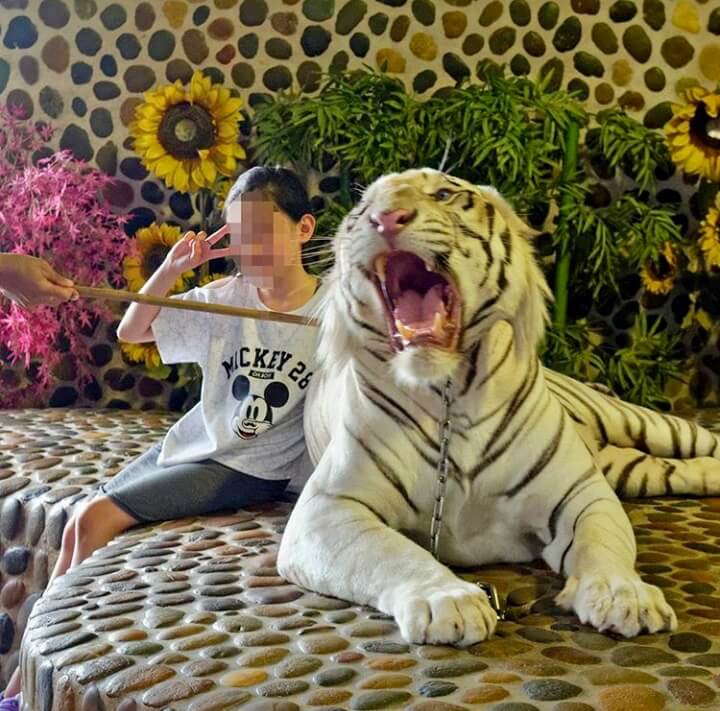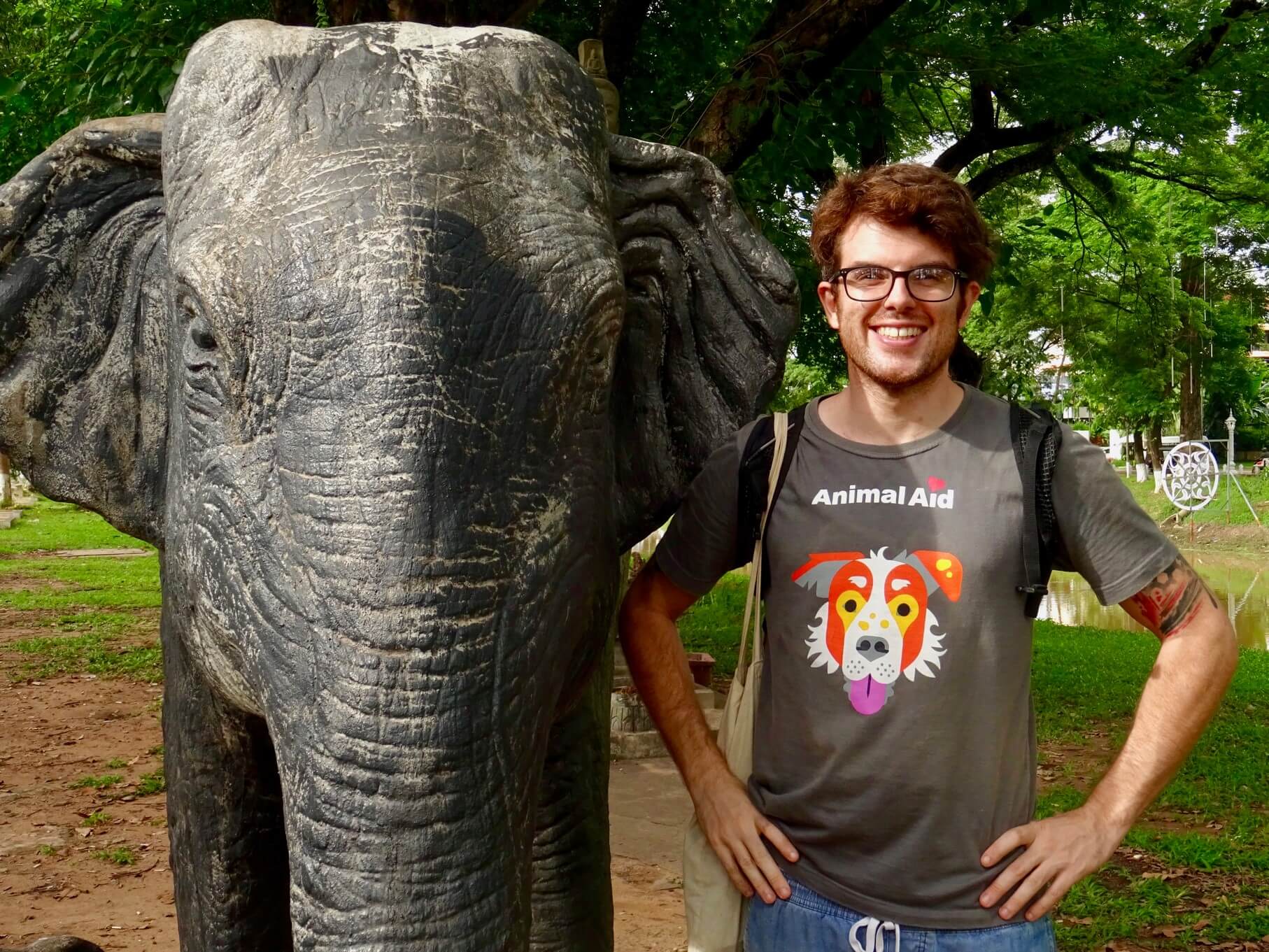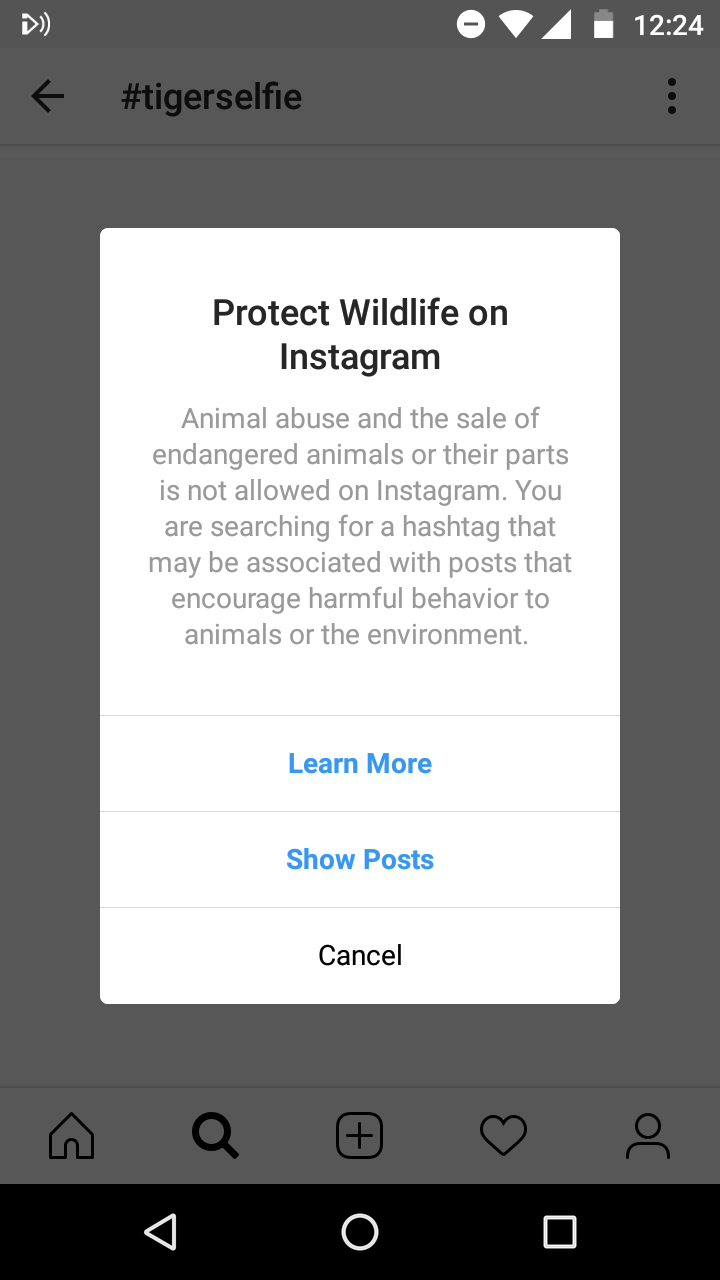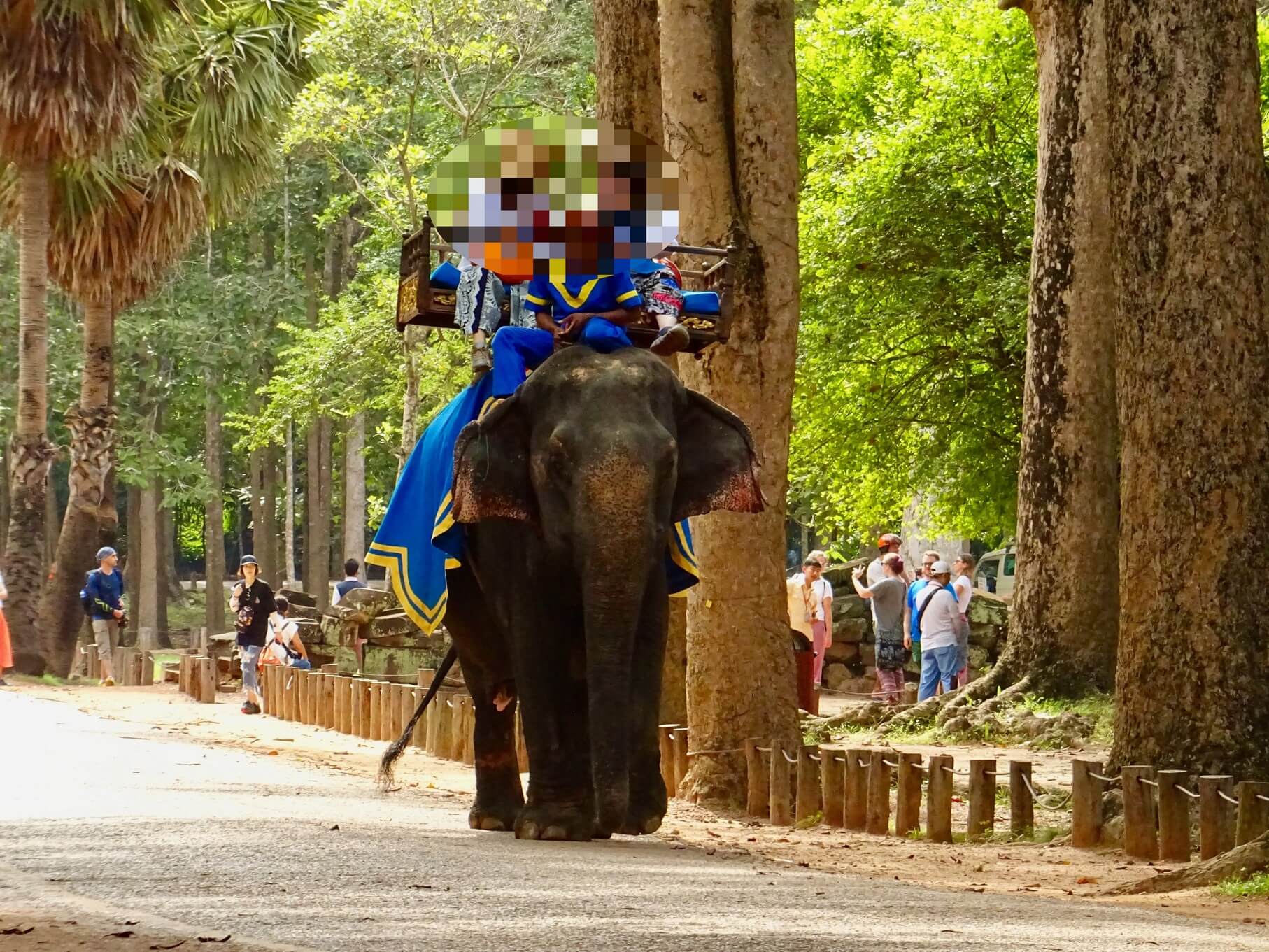The Hidden Cruelty of Animal Encounter Tourism: Selfies, Stress and Suffering
One of the most rewarding and exciting parts of travel is seeing exotic animals in their home countries. Many people dream of seeing an elephant, dolphin or lion. It might even be the whole reason they booked their trip. But unfortunately, animal encounter tourism has a dark side, one which is often hidden from view. Sadly many animal lovers may be unknowingly contributing to the suffering of the very animals that they have come to see.

What is animal encounter tourism?
Wildlife tourism is worth over $250 billions dollars worldwide. Swimming with dolphins, riding an elephant, posing with a cute monkey in a little uniform, coming face-to-face with a tiger. These are things which often make it onto people’s travel ‘bucket lists’. There are all manner of animal experiences on offer, from cuddling lion cubs to handling sea turtles.
On the surface of it, for an animal lover or adventurous tourist this sounds like an incredible experience. To stroke a tiger, to actually feel the softness of its fur and the power of its muscle, to have a photo of yourself next to the mighty animal…what’s not to like, right? The sad reality is that there is a lot of hidden cruelty in this industry. We feel that it is important to share with you the reality of what life is like for these animals, before you make the decision to take part.
Ok, so what does go on behind the scenes?
Let’s take two of the biggest animal encounter tourism activities (particularly prevalent in Asia, where we are at the moment) – elephant rides and tiger encounters.
The truth about elephant riding
You might think that riding an elephant is fairly harmless. I mean, we ride horses and they’re a lot smaller, right? Surely an elephant can take the weight easily? Well, it’s not that simple. The fact of the matter is that elephants are wild animals. To make any wild animal do what you tell it to, it needs to be trained and controlled. The process of training an elephant is truly heartbreaking.
The method used to train elephants is called ‘the crush’ and involves taking a baby elephant away from its mother. The elephant is then restrained and has to endure severe pain. They are beaten, and food and water is withheld. This continues, sometimes for weeks on end, until their spirit is broken. Once they are ‘broken’ they will obey the commands of their handler, but are still kept chained up and controlled with the use of bullhooks. They often have to work long hours, and suffer from stress and heat exhaustion. Elephants are social animals and live in herds. But because elephants in the tourism industry are kept in chains, they are not able to interact normally with each other.

Is there an ethical alternative?
Yes! If you are lucky enough to visit a country that has set aside National Parks or Protected Areas for their elephants, you can look into doing a safari. It is still important to do your research and go with a reputable organisation or tour guide. We visited Udawalawe National Park in Sri Lanka and it was an incredible experience. No encounter with elephants in captivity could compare with the feeling of seeing these magnificent animals in the wild, it was exhilarating. Our jeep driver was very respectful and kept his distance from the elephants. We were able to see them just acting naturally together, splashing in the water and munching away in the undergrowth. We have heard stories of other parks where the jeep drivers have been known to harass or chase down the elephants. If in doubt, read reviews and find out about other travellers’ experiences.
There are also several ‘ethical elephant encounter’ outfits which have sprung up in recent years. On one hand this is great. It means that A) there is a demand for a more ethical approach and B) organisations are listening to this demand. However, it is still really important to do your research! One of the most established places is Elephant Nature Camp near Chiang Mai in Thailand. This place has been running as a rehabilitation centre since the 1990s. There are many newer ‘copycat’ places but some of these still offer elephant riding. The best bet is to look up any potential operator on TripAdvisor and see what others have said about their visit. If you can see mentions of riding, or of elephants being chained or hit then they are clearly not as ethical as they claim.
Close encounters with tigers
Another huge industry in Asia is tiger attractions. These are branded as zoos, circuses or ‘meet a tiger’ experiences. They may even call themselves sanctuaries. A quick search on Instagram reveals many pictures of smiling tourists posing next to a tiger, arms slung casually along their backs. Again, tiger cubs are taken from their mothers at a very early age in order for this to happen. They are handled unrelentingly, causing them a lot of distress. They are also kept in tiny cages, restrained and subjected to harsh training practices.
The abuse doesn’t stop once the cubs are ‘trained’ and they reach adulthood. Some tiger attractions offer cruel performances, such as tigers jumping through flaming hoops and walking on tightropes. Tigers are chained, cooped up and beaten, and the withholding of food and drink is a punishment or control tool. When they are used as tourist photoshoot props, they are poked and prodded to make them roar for the picture. They are usually given drugs to keep them docile too.

That sounds awful. What can I do?
World Animal Protection is a fantastic organisation which stands up for the rights of wildlife all over the globe. They campaign against many cruel forms of animal encounter tourism. If you visit their website here you can find a downloadable guide on how to be an animal friendly tourist. Their advice includes doing your research before you start your trip. They also recommend asking questions and thinking before you buy food or souvenirs. They also have a list of elephant-friendly travel companies.
“If you can ride, hug, or take a selfie with a wild animal, chances are the venue is cruel. Don’t go!” World Animal Protection.
It’s not all bad – word is spreading and people are learning the dark truth behind animal encounter tourism. It is our responsibility as tourists and travellers to influence the demand. By participating in any of these cruel activities, you are sending a message to the organisers that it is acceptable, and the practice with continue. If we all refuse to take part then the industry will die out.
If the subject comes up with fellow travellers, or you know someone who is considering visiting one of these attractions, please please try and explain what goes on behind the scenes. Most people are animal lovers who would be horrified about what goes on. The majority of people visit these places thinking they are a fun day out. We need to make sure that people know the truth. When they do, they will surely decide that an amazing Instagram-worthy photo is not worth the suffering.
There are loads of fun animal encounters that you can still have!
Safaris with reputable companies, visits to rescue or rehabilitation centres, volunteering opportunities…there’s heaps of rewarding and exciting ways to see these amazing animals in their natural habitat, or to get up close and personal while lending a hand. The key thing to remember is to do your research first. Read what other people have experienced before you take part. Not all organisations are what they claim to be.
Any tourist attraction that involves taking a wild animal out of its natural habitat, where the focus is entertainment rather than rescue, is likely to be cruel. Swimming with dolphins, walking with lions, playing with sea turtles…be an animal friendly tourist and say no to cruelty.
It’s not all doom and gloom
One of the best moments of our trip so far was a morning volunteering with Animal Aid Unlimited. They are located near Udaipur in Rajasthan, India. This amazing organisation rescues and rehabilitates sick and injured animals, from street dogs and cats to cows, monkeys and goats. It was all hands on deck as we bottle fed calves, mucked out the stalls and spent some time giving love and attention to disabled dogs. So it’s not all doom and gloom. There are incredible programs like this all over the world, run by caring and dedicated staff and volunteers.

We discovered while researching this article that Instagram has been doing its part too. If you search for hashtags such as ‘#tigerselfie’, ‘#slothselfie’, ‘#elephantride’, or ‘#dolphinkiss’ amongst many others, a warning will pop-up which reads:

For more information on animal encounter tourism we highly recommend you visit World Animal Protection. They have produced details reports on what goes on behind the scenes. You can find details on how you can help or get involved in their campaigns. World Animal Protection recently succeeded in persuading TripAdvisor to stop selling tickets for some of the worlds cruellest animal activities. TripAdvisor also agreed to take steps to educate its users on the realities behind animal encounter tourism. Given that they are one of the biggest influencers in the tourist industry this can only be good news! Be it large companies or individuals – we all have the power to help stop cruel practices in animal encounter tourism.

Please note this post may contain affiliate links. Click here to read our policy.


I’m so glad you wrote this post. I’ve been telling people about this for years, many don’t even think about it. The Pinnawala ‘elephant orphanage’ in Sri Lanka is one for making out like they rescue elephants but actually treat them terribly and they are simply used as a tourist attraction. It makes me sick to my stomach to see. I donate monthly to World Animal Protection, they’re a great organisation!
Thank you! We just want more people to understand what goes on behind the scenes and maybe think twice. World Animal Protection are awesome!
Thank you for posting this! I’m so glad to see companies like Instagram doing their part for this, too. A lot of it is down to ignorance rather than actual cruelty on the tourists’ part too, so I’d like to think we can change the industry for good!
Thank you! Yeah we were really happy to see Instagram and TripAdvisor taking a stand. You’re right, I think it is often down to ignorance and the fact that tourists don’t understand the impact they are having. Here’s hoping that by spreading the word we can all help to put and end to things like this!